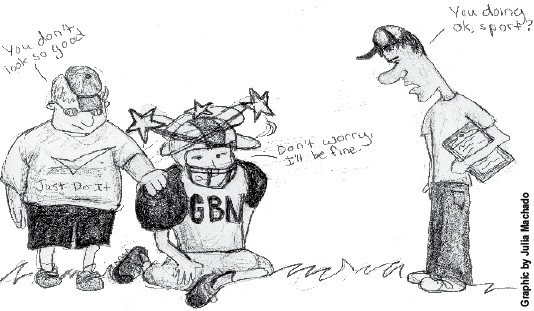After a student suffers a concussion, the phrases “return to play” and “return to learn” are emphasized by researchers, doctors and coaches alike. However, by focusing so heavily on the return, concussed students are bypassing the healing process.
Students commonly understate concussion symptoms in order to make this “return” as quickly as possible, according to neuropsychologist Neil McGrath. But by underplaying the intensity of their concussions, students are risking the quality of their recovery.
As the American Academy of Pediatric (AAP) sets standards for return based on how the person is feeling, there is outside influence to get kids back too quickly, forcing them to underplay their conditions. However a premature return means risking additional—and potentially worse—brain damage.
Between the chaotic buzz of the school’s hallways and the plethora of illuminated screens in the classroom, the sensory stresses of school can hinder the healing process. When homework, tests and projects are added, a student who returns to school prematurely is pushed down on an even steeper decline. Upon the incidence of a follow-up concussion while returning prematurely to sports, student athletes are at risk for second-impact syndrome. Research from the AAP indicates that developing brains are at greater risk for this sometimes fatal and debilitating syndrome.
While teachers are understanding, the rigorous school curriculum inherently pressures students to not want to miss out in cumulative courses such as math, science and language classes. Even when teachers of these courses do not require make up work, students are pressed with making up missed material so they are not behind the rest of the class for the remainder of the year. Along with not wanting to get out of shape, athletes do not want to miss out on precious playing time because of how it may affect their sports opportunities in the future or how it may affect the rest of the season.
Despite the pressure, concussed students need to be honest with themselves and prioritize their health. While it may be a nuisance and it might ruin one’s planned course of the year, the AAP guidelines should be followed for the overall good of the student.


